It is always a good idea to future proof your lenses, especially when working with the Minolta manual focus cameras. I say that because, like Nikon, while the original 1958 SR-Mount is basically the same as 1977 SR-Mount, there are subtle differences, like the Nikon F-Mount. I first picked up this lens as part of a drive to get better glass for my Minolta X-7a, my second Minolta SLR. While I could go with MC variant lenses, I went with the MD variant. The reason being that if I had updated my X-7a to an X-700, I needed lenses that would work with all the functions of the X-700, including Shutter Priority and the all-important Program mode. Ultimately as I gave up Minolta for several years and eventually landed on an XE-7, the need for MD was not that needed (at least until I replaced the XE-7 with an XD11/XD5). Either way, the Rokkor-X 28/2.8 is a solid lens that certainly improved my wide-angle capacity for my Minolta kit over a third-party dog I started with; I think it was a Makinon? With improved coating, close-focus-correction, and excellent optical qualities, the 28/2.8 is not only affordable but makes an excellent lens in the field.
Lens Specifications
Make: Minolta
Model: MD W.Rokkor-X 28mm 1:2.8 (MD-II)
Focal Length: 28mm
Focal Range: ∞ – 0.3m
Aperture: f/2.8 – f/22, 6 Blades
Structure: 7 Elements in 7 Groups

Minolta XE-7 – Minolta MD W.Rokkor-X 28mm 1:2.8 – Kodak TMax 400 @ ASA-400 – FA-1027 (1+9) 8:00 @ 20C
Build Quality
Like any Rokkor lens, the build quality of the 28/2.8 is superb. While constructed of a blend of plastic and metal, the parts that take the most damage through constant use are constructed of metal, including the lens mount and the filter threads. While the body itself has a plastic outer layer, the internals is also constructed from metal. A rubber coating allows for a comfortable grip when using the focusing ring. The lens is the perfect size on both larger-bodied Minolta’s like the XE or older SR-T cameras but also fits well on smaller XD or XG cameras. While not as compact as the Rokkor 45/2, it certainly does not add too much front weight to a camera nor take up a lot of space in your camera bag. The one thing you should get with the lens is the Minolta hood, which sadly is constructed out of plastic, making it easily broken. Functionally the lens is excellent, with the focusing ring moving smoothly with the right amount of resistance, allowing for a clean experience when moving focus in and out. The aperture ring is also well made and gives good clicks when at each stop.

Minolta XE-7 – Minolta MD W.Rokkor-X 28mm 1:2.8 – Kodak TMax 400 @ ASA-400 – FA-1027 (1+9) 8:00 @ 20C
Minolta XE-7 – Minolta MD W.Rokkor-X 28mm 1:2.8 – Kodak TMax 400 @ ASA-400 – FA-1027 (1+9) 8:00 @ 20C
Minolta XE-7 – Minolta MD W.Rokkor-X 28mm 1:2.8 – Kodak TMax 400 @ ASA-400 – FA-1027 (1+9) 8:00 @ 20C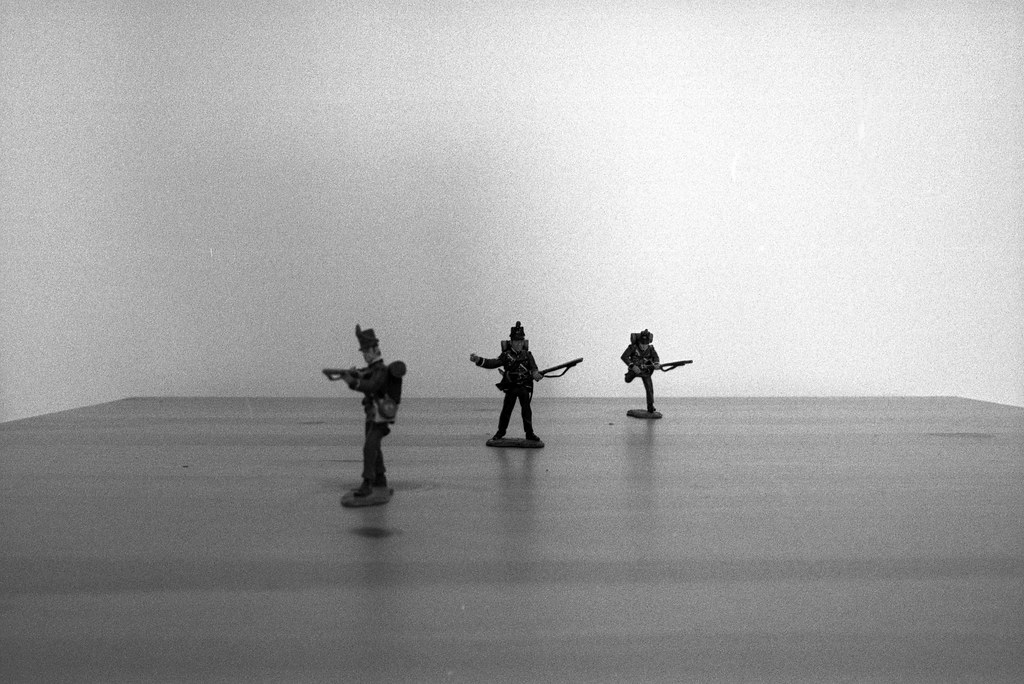
Minolta XE-7 – Minolta MD W.Rokkor-X 28mm 1:2.8 – Kodak TMax 400 @ ASA-400 – FA-1027 (1+9) 8:00 @ 20C
Minolta XE-7 – Minolta MD W.Rokkor-X 28mm 1:2.8 – Kodak TMax 400 @ ASA-400 – FA-1027 (1+9) 8:00 @ 20C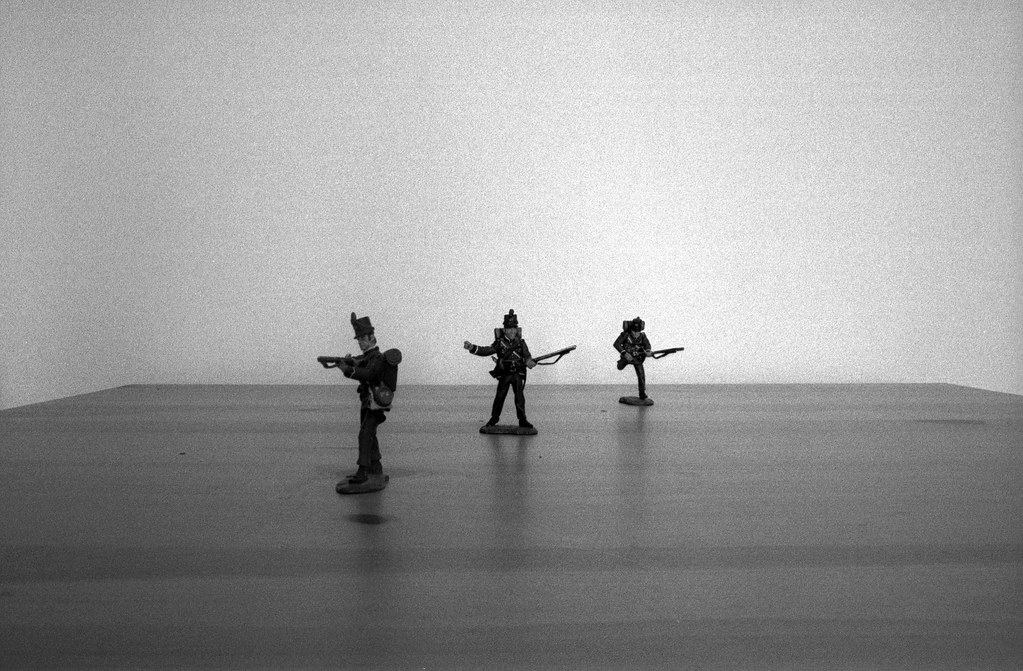
Minolta XE-7 – Minolta MD W.Rokkor-X 28mm 1:2.8 – Kodak TMax 400 @ ASA-400 – FA-1027 (1+9) 8:00 @ 20C
Image Quality
The image quality on this lens is excellent; give that we’re talking about seven elements in seven groups of construction here, there are no complaints about the optical quality. There is little to no distortion even when getting up close to that 30cm close focus, thank corrections in the lens. Your straight lines will stay straight. And the optical construction certainly yields excellent image sharpness. The one trouble I see with the lens is that the fall-off is heavy when shooting f/2.8 and f/4; it does go away by f/5.6. Personally, I find the lens’ sweet spot is between f/8 and f/22 and having that f/22 certainly helps to ensure that everything is in focus. The out-of-focus elements are okay, smooth, but nothing special, normal. The one thing you do have to watch out for with a lens like this is flare from off-axis light; having that hood is certainly a must when shooting outside in hard light. While I shot this on B&W, the lens renders colours well, giving an almost 1980s look, especially if paired with Kodak ColorPlus 200.
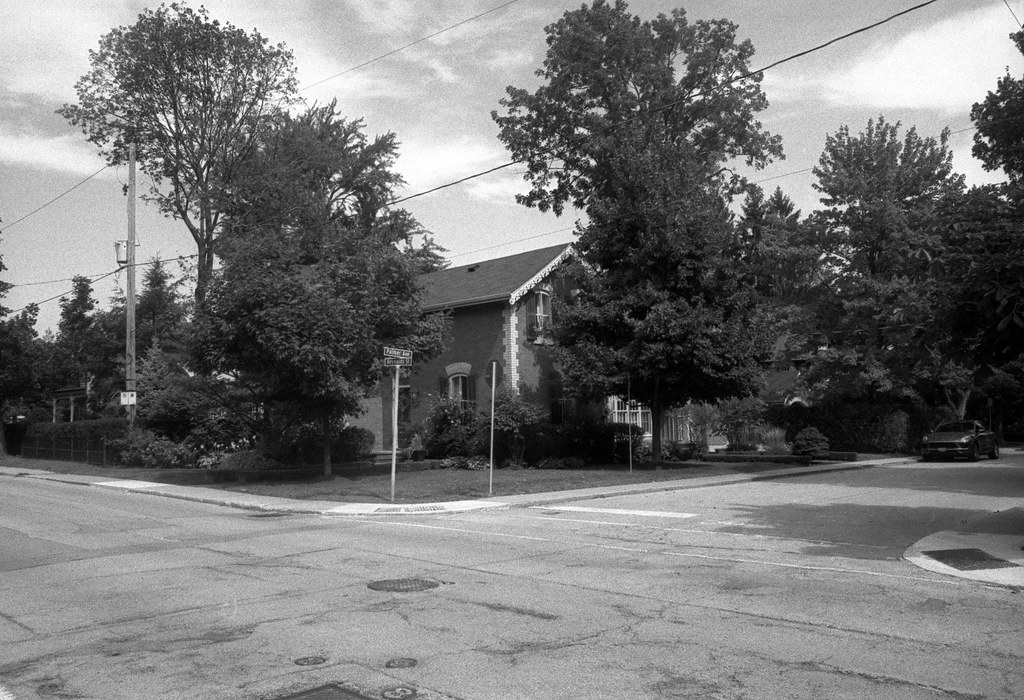
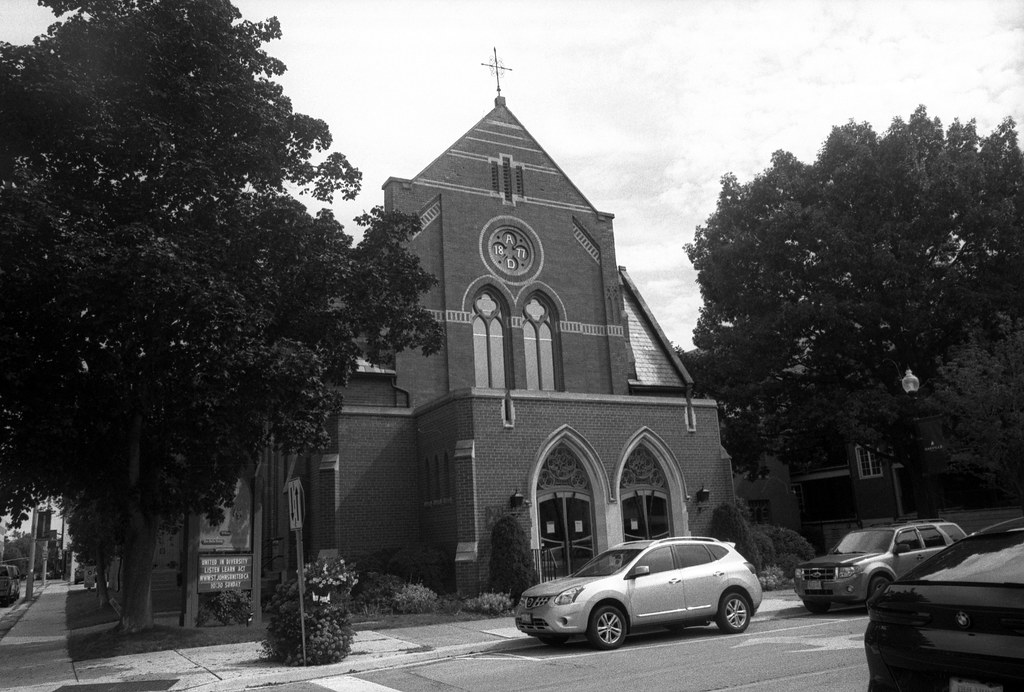

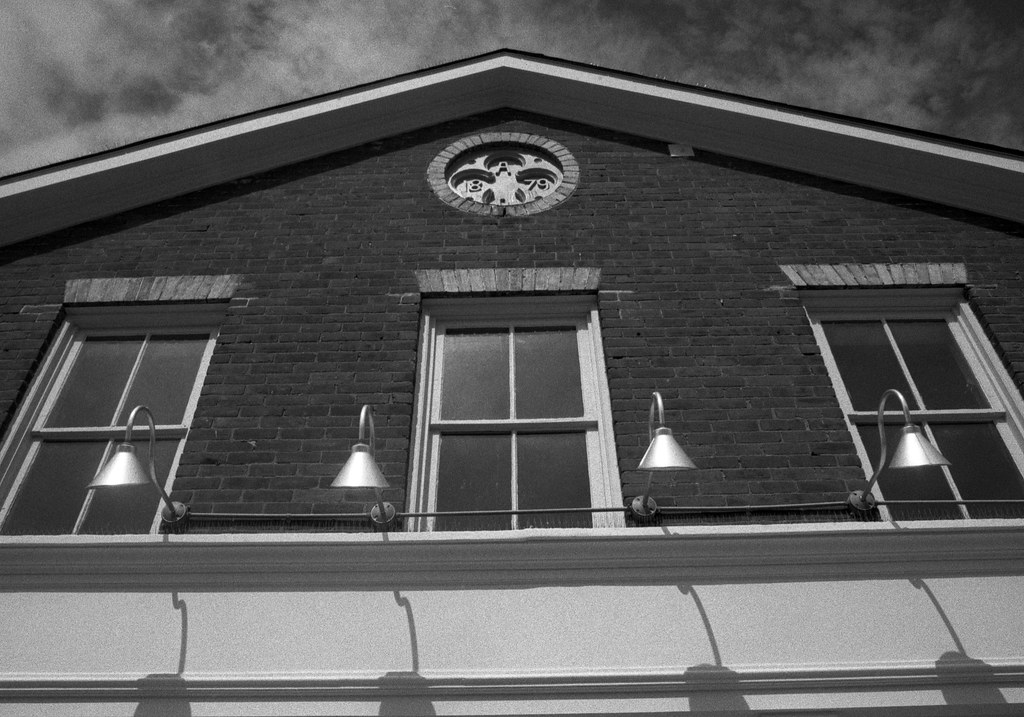

Applications
Like any good wide-angle lens, the best use of the Rokkor-X 28/2.8 is for landscape application or anything where you need to capture a wide-angle of view, plus having that capacity to stop down f/22 certainly will allow for everything to be in focus. Making this also an excellent lens for architecture, cityscapes and streetscapes. And since the lens has no distortion and your straight lines stay mostly straight, especially at a distance, you are well set up for ensuring you don’t have to do much in post-processing. While you can get close in with a 30cm close-focus and there is a bit of close-focus-correction on the lens, I personally would not use the Rokkor 28/2.8 for that purpose; there’s a bit more distortion the closer you get. It can also work well for capturing large groups in tight quarters, and with an f/2.8 open aperture, it works well in low light when flash is not an option. It makes an excellent choice for a wide-angle lens for a three-lens travel kit. Plus, given that the lens is an MD variant of the SR-Mount, you can use it with almost all Minolta SLRs from the SR-T line through the X-Series; it will work flawlessly with all these excellent cameras.

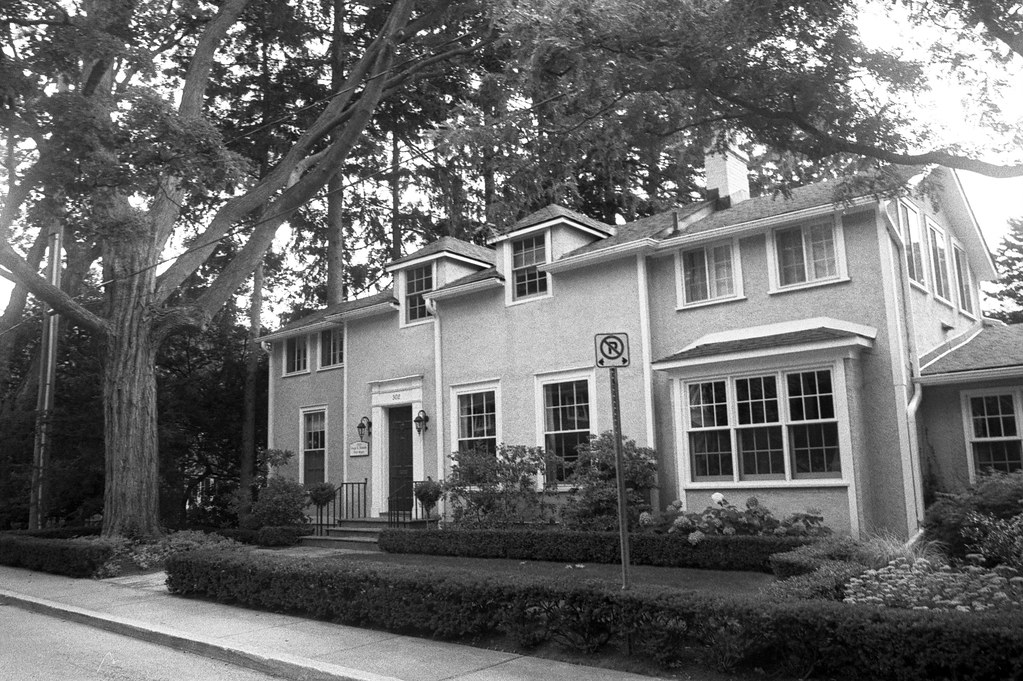
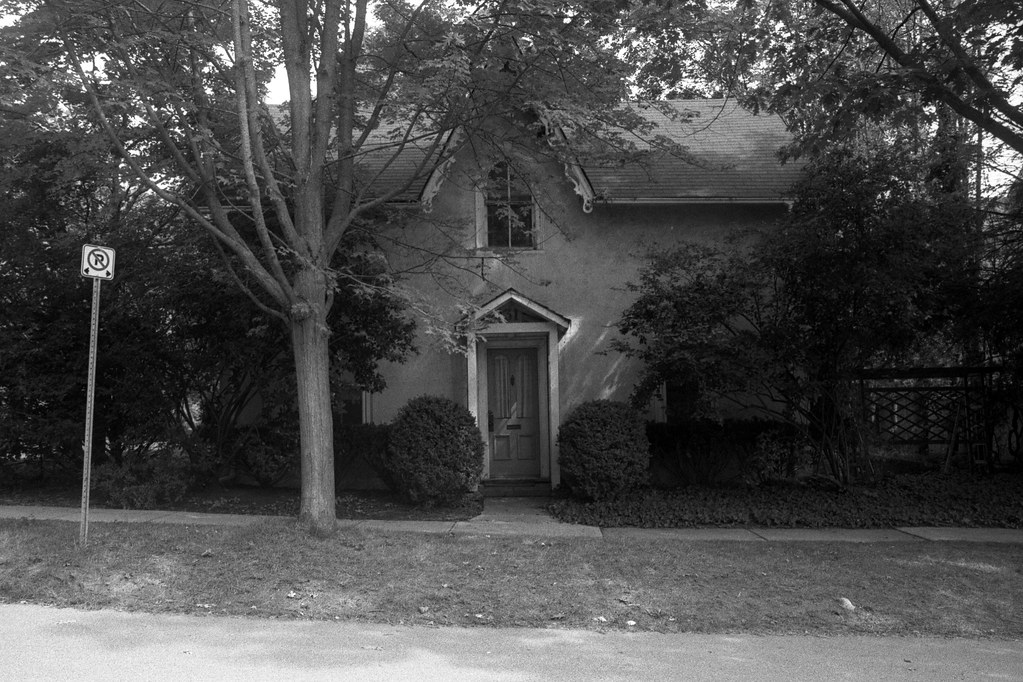


The Low Down
I should note that there is a 3rd Generation version of this lens; it lacks the Rokkor branding on the lens itself, but watch those serial numbers; the 7/7 construction will have serial numbers starting with 80, while a 5/5 construction will start with 70. I’m a big fan of this lens and it was among those lenses that I kept stashed away after I dropped out of the Minolta system as I increased my kit for Nikon. And I’m glad I did, as it fit back in perfectly when I picked up a Minolta XE-7. It’s the perfect balance for a travel kit without being too wide. While it is not an inexpensive lens, on the secondary market, you’re looking at prices averaging 130$, but you can find them in the range of 60-250$, which is huge. But like anything, it’s always best to try before buying from a seller with a good return system. While I mainly shoot with the 45mm f/2, the second most used lens in my Minolta SR system is the 28mm f/2.8.
Further Reading
Don’t just take my view on the Rokkor-X 28mm 1:2.8, check out these other reviews.
Casual Photophile – Minolta MD 28mm f/2.8 Review (MD-III)
Vintage Lens Review – Minolta MD 28mm f/2.8 Review (MD-III)
The Rokkor Files – 28mm f/2.8 MD W.Rokkor-X Review (MD-II & MD-III)
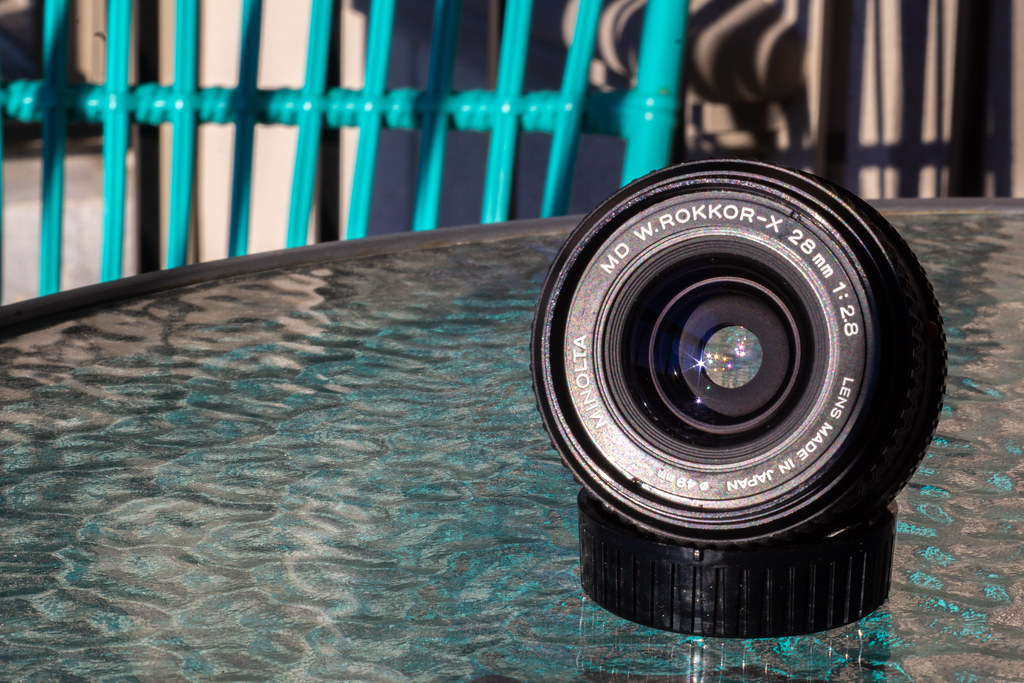
Typo: First paragraph, Makinon lens, not MacKinnon. 🙂